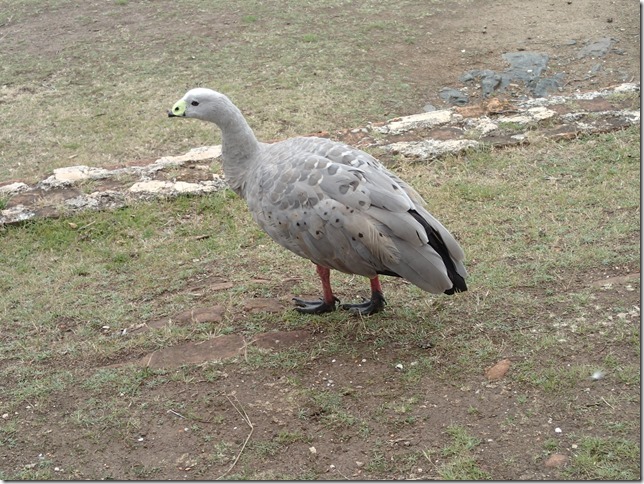"42:40.69S 148:03.55E" Maria Island

VulcanSpirit
Richard & Alison Brunstrom
Thu 18 Dec 2014 06:30
|
Maria Island is a National Park on the east coast of Tasmania. It was named
by Abel Tasman himself when he passed this way in the seventeenth century; there
are lots of Dutch and French names here because they got here before the British
got properly organised – in fact the whole place very nearly became
French.
Maria is famed for several things – a convict settlement, a world-class
fossil bed, and wonderful wildlife.
Here is an endemic Cape Barren Goose Cereopsis novaehollandiae.
This animal is of very uncertain origin – it may be distantly related to the
true geese & swans, or it may be a giant shelduck, or more probably it is in
a separate bird family closely related to the extinct flightless goose of NZ and
its appearance is as a result of convergent evoluton. Full genetic analysis will
be needed to sort it out – but meanwhile since it looks, behaves and sounds like
a goose we’ll continue to call it one. These birds are almost tame; this one is
grazing the lawn in the convict settlement:
 Here is another grazer, a Common Wombat Vombatus ursinus. These
are nocturnal badger-sized marsupials related to koalas. They are quite
delightful animals to watch moseying around on the grasslands as night falls,
looking for all the world like Paddington:
 Wombats have short legs as you can see which makes it very difficult for
the young (carried in a pouch like all marsupials) to graze as they would just
be dragging along the ground. So, uniquely, they have evolved a backwards facing
pouch – the joey looks and grazes out of the rear, looking like a real life
version of Dr Doolittle’s push-me-pull-you.
And here is a real rarity, a Tasmanian Devil Sarcophilus
harrisii:
 This is now the world’s largest remaining marsupial predator (the marsupial
lion and the Tasmanian Tiger having been rendered extinct). It is about the size
of a large Jack Russell and like most marsupials, noctunal. And what do you call
a young devil? An imp, of course. This one is busy trying to catch chicks of the
endemic flightless moorhen, resulting in an enormous racket in the dusk. Devils
are suffering from a quite terrible facial cancer of modern natural origin and
are in serious danger of extinction as a result. This one (disease free) has
been relocated with others to Maria in an attempt to save the species.
|